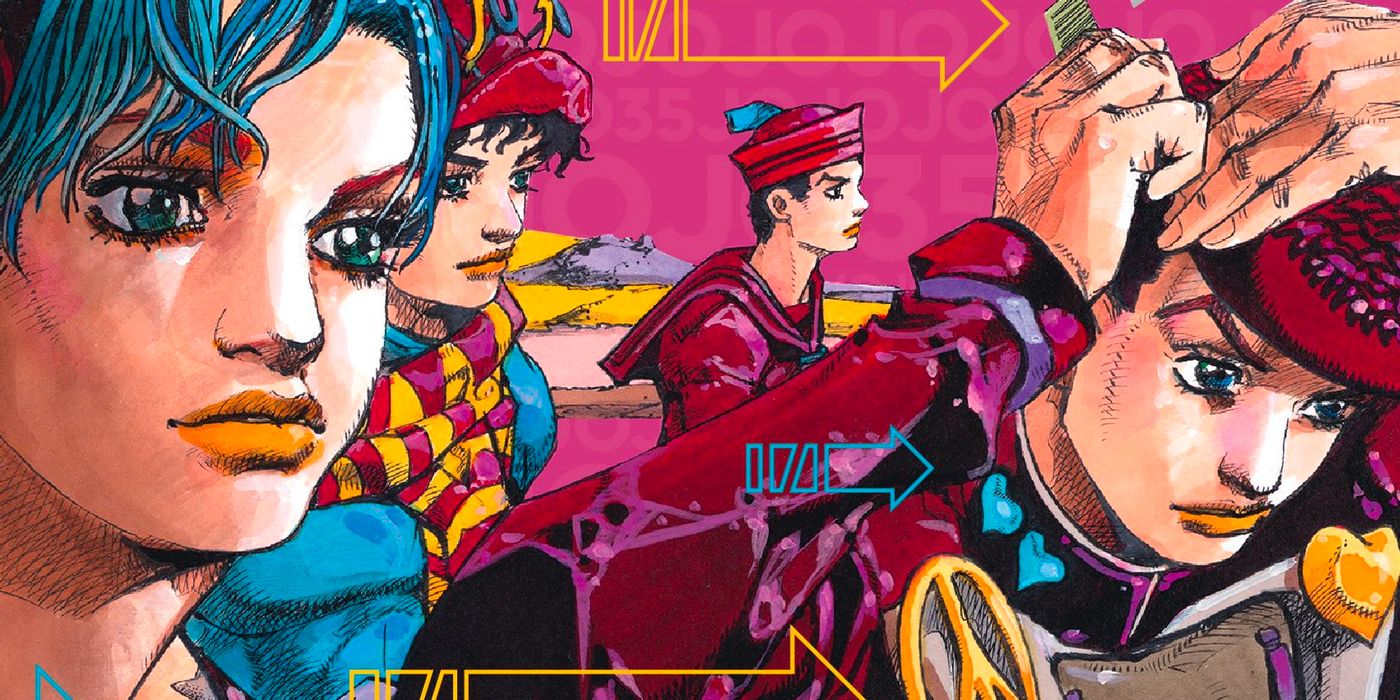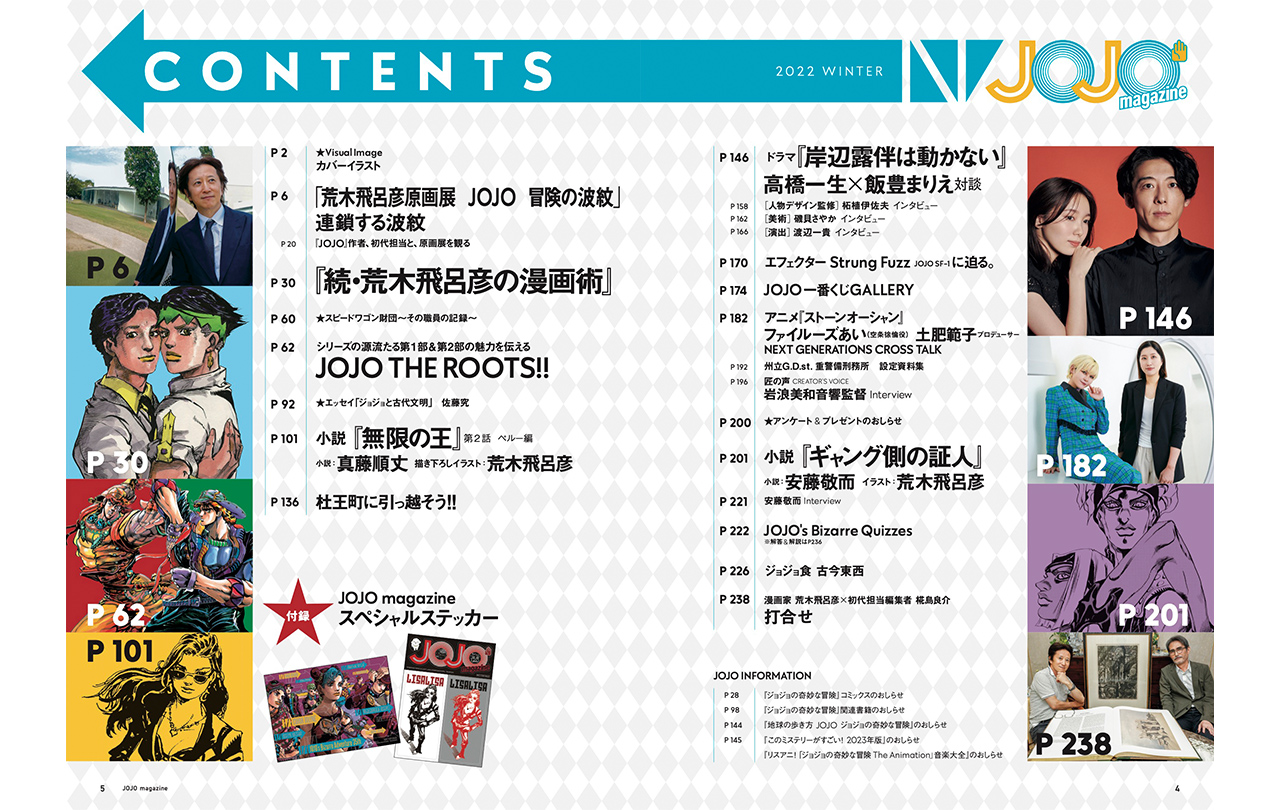Jojo magazine covers have become synonymous with iconic fashion and artistic expression. For decades, these covers have captured the essence of pop culture, music, and visual art, making them a staple in the world of design and creativity. Whether it's through bold typography, striking photography, or innovative layouts, Jojo magazine covers have consistently pushed the boundaries of what a magazine cover can achieve.
Magazines have long been a reflection of societal trends, and Jojo magazine covers are no exception. These covers have not only showcased the latest fashion trends but have also provided a platform for emerging artists, photographers, and designers to showcase their talents. The impact of these covers extends beyond the magazine itself, influencing everything from advertising to pop art.
In this article, we will explore the fascinating world of Jojo magazine covers, delving into their history, artistic significance, and cultural impact. Whether you're a fan of fashion, art, or simply curious about the evolution of magazine design, this article has something for everyone. Let's dive in!
Read also:Unveiling Angela Alvarez Leaks The Truth Facts And Insights
Table of Contents
- The History of Jojo Magazine Covers
- Artistic Significance of Jojo Covers
- Cultural Impact on Pop Culture
- Exploring Fashion Trends in Jojo Covers
- The Role of Photography in Jojo Magazine Covers
- Key Design Elements of Jojo Covers
- Most Influential Jojo Magazine Issues
- Jojo Covers Featuring Celebrities
- Future Directions of Jojo Magazine Covers
- Conclusion: Why Jojo Covers Matter
The History of Jojo Magazine Covers
Jojo magazine covers have a rich history that dates back to the early days of print media. Since its inception, Jojo magazine has been at the forefront of creative magazine design, setting trends that other publications have followed. The magazine's covers have evolved over the years, reflecting changes in societal norms, technological advancements, and artistic movements.
One of the earliest Jojo covers featured a minimalist design with bold typography, a hallmark of mid-century modernism. As the decades progressed, the covers became more elaborate, incorporating vibrant colors, intricate patterns, and cutting-edge photography. This evolution mirrors the broader trends in graphic design and visual communication.
Early Years and Evolution
In the 1950s and 1960s, Jojo magazine covers were heavily influenced by the art movements of the time, such as Abstract Expressionism and Pop Art. Artists like Andy Warhol and Roy Lichtenstein drew inspiration from these covers, incorporating their elements into their own works. This cross-pollination between art and magazine design helped elevate the status of Jojo magazine covers, making them a subject of academic study and artistic appreciation.
Artistic Significance of Jojo Covers
Jojo magazine covers are not just marketing tools; they are works of art in their own right. Each cover is a collaboration between designers, photographers, stylists, and editors, resulting in a visual masterpiece that captures the zeitgeist of its era. The artistic significance of Jojo covers lies in their ability to convey complex ideas through simple yet powerful imagery.
Collaboration with Renowned Artists
Throughout its history, Jojo magazine has collaborated with some of the most renowned artists and photographers in the world. Names like Annie Leibovitz, Helmut Newton, and Richard Avedon have graced the pages of Jojo, contributing to its legacy as a platform for artistic innovation. These collaborations have not only elevated the magazine's profile but have also provided a stage for these artists to experiment and push creative boundaries.
Cultural Impact on Pop Culture
Jojo magazine covers have had a profound impact on popular culture, influencing everything from fashion to music to film. The covers have often featured iconic celebrities, musicians, and artists, cementing their place in cultural history. For example, the famous Jojo cover featuring a young Madonna in the 1980s became a symbol of the decade's rebellion and individuality.
Read also:F1nn5ter Onlyfans Leaked Understanding The Phenomenon And Its Impact
Influence on Advertising and Branding
The visual language of Jojo magazine covers has also permeated the world of advertising and branding. Many ad campaigns have borrowed elements from Jojo covers, such as bold typography, striking imagery, and innovative layouts. This cross-pollination has further solidified the magazine's influence on contemporary visual culture.
Exploring Fashion Trends in Jojo Covers
Jojo magazine covers are renowned for their fashion-forward approach, showcasing the latest trends and setting the stage for future movements. From the extravagant designs of the 1980s to the minimalist aesthetics of the 1990s, Jojo covers have consistently reflected the fashion of their time while also predicting future trends.
Iconic Fashion Moments
- The 1980s saw the rise of bold colors, oversized silhouettes, and eclectic accessories.
- The 1990s ushered in an era of minimalism, with clean lines and neutral palettes dominating the covers.
- The 2000s brought a fusion of high fashion and streetwear, reflecting the growing influence of urban culture.
The Role of Photography in Jojo Magazine Covers
Photography plays a crucial role in the success of Jojo magazine covers. The right image can capture the viewer's attention and convey a story in a single glance. Jojo has worked with some of the most talented photographers in the industry, each bringing their unique style and vision to the covers.
Innovative Techniques
Jojo magazine covers have experimented with a variety of photographic techniques, from traditional film photography to cutting-edge digital manipulation. These techniques have allowed the magazine to create covers that are both visually stunning and conceptually rich, appealing to a wide audience.
Key Design Elements of Jojo Covers
The design of Jojo magazine covers is a carefully orchestrated process that involves multiple elements working in harmony. From typography to layout, each component plays a vital role in creating a cohesive and impactful cover.
Typography and Layout
- Typography: Jojo covers often feature bold, eye-catching fonts that complement the imagery.
- Layout: The arrangement of elements on the cover is designed to guide the viewer's eye, creating a narrative that draws them into the magazine.
Most Influential Jojo Magazine Issues
Over the years, Jojo magazine has released several issues that have left a lasting impression on the world of fashion and art. These issues have not only showcased groundbreaking designs but have also sparked important conversations about culture, identity, and representation.
Landmark Covers
- The 1995 issue featuring Naomi Campbell became a symbol of diversity in fashion.
- The 2001 issue with Beyoncé on the cover helped solidify her status as a global icon.
- The 2010 issue celebrating street art brought attention to the burgeoning movement.
Jojo Covers Featuring Celebrities
Celebrities have long been a staple of Jojo magazine covers, with each appearance generating buzz and excitement. These covers not only showcase the talents of the featured stars but also provide a platform for them to express their personal style and creativity.
Notable Celebrity Appearances
From musicians like Taylor Swift to actors like Emma Stone, Jojo magazine has featured a diverse array of celebrities on its covers. Each cover tells a unique story, capturing the essence of the star and their current projects. The collaboration between celebrities and Jojo has resulted in some of the most memorable covers in magazine history.
Future Directions of Jojo Magazine Covers
As technology continues to evolve, so too will the world of magazine design. Jojo magazine covers are poised to embrace new technologies, such as augmented reality and interactive elements, to enhance the reader's experience. These innovations will allow Jojo to remain at the forefront of creative magazine design, setting trends for years to come.
Embracing New Technologies
By incorporating cutting-edge technologies into their covers, Jojo magazine can create immersive experiences that engage readers on multiple levels. This forward-thinking approach will ensure that Jojo remains relevant in an increasingly digital world.
Conclusion: Why Jojo Covers Matter
Jojo magazine covers have played a pivotal role in shaping the world of fashion, art, and design. Their influence extends far beyond the magazine itself, impacting everything from advertising to pop culture. As we have seen, Jojo covers are not just visual representations of trends but are also powerful tools for storytelling and cultural commentary.
We invite you to explore more of our articles on fashion, art, and design. Leave a comment below to share your thoughts on Jojo magazine covers or suggest a topic you'd like us to cover in the future. Together, let's continue the conversation about the fascinating world of magazine design and its impact on our lives.


